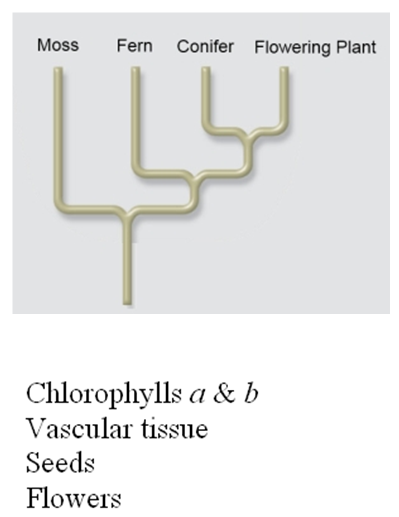Based on what you know about the principle of parsimony, which of the following is most likely a symplesiomorphy of mosses, ferns, conifers, and flowering plants?
Given the following cladogram and list of characteristics:

A. Chlorophylls a and b
B. Vascular tissue.
C. Seeds.
D. Flowers.
E. Both chlorophylls a and b and seeds.
A. Chlorophylls a and b
You might also like to view...
The sexual phase of Plasmodium is called a:
A. sporozoite B. gametocyte C. merozoite D. plasmacyte E. anthracite
Based on the graph of the mixed culture, what can you determine about the niche for each
individual species?
a. There is a large amount of niche overlap. b. There is minimal niche overlap. c. Competition for resources is partitioning the available niches. d. Intraspecific competition is reducing niche overlap.
Probes for cloned genes use ____.
A. complementary nucleotide sequences tagged with a detectable label B. specific antibodies that kill all the cells C. specific enzymes that lyse all the cells D. certain bacteria that glow when they take up the genes E. DNA ligase
Which of the following is/are common to chemiosmosis and the light-dependent reactions of photosynthesis?
A) reduction of NADP+ only B) electron transport only C) a proton gradient only D) both electron transport and a proton gradient E) electron transport, a proton gradient, and reduction of NADP+